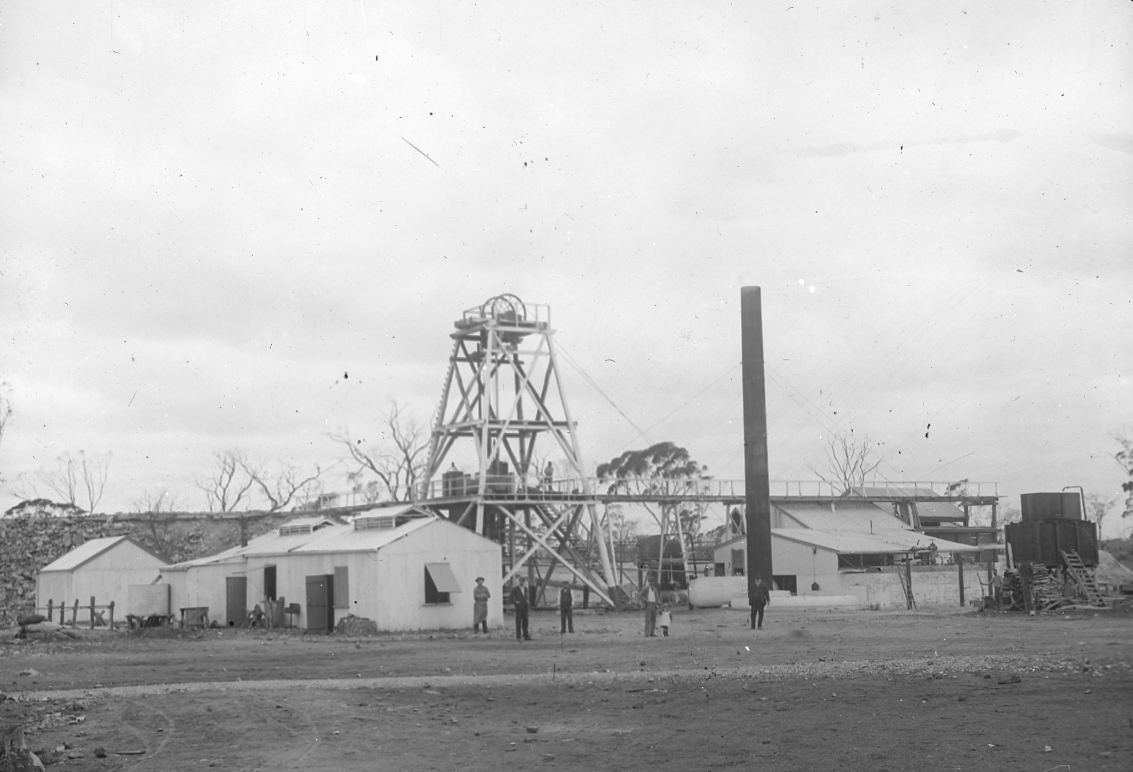THE LONDONDERRY -
In March 1894 a party of prospectors equipped with a spring cart, two horses some tools and limited food were returning to Coolgardie after an unsuccessful trip.
They intended to sell their gear and disband but on reaching a spot 20 miles south of Coolgardie they stopped to feed their horses at an area where there was some green grass growing.
It was only noon but they decided to stop overnight and while they were there they searched the spot for any signs of gold.
One of the men, Elliott, noticed a quartz reef that looked as though earlier prospectors had been working on it.
He knocked a couple of pieces off the reef and found almost unbelievable quantities of gold.
The other members of the party were still out searching so Elliott hid his find under the cart and waited until after their evening meal to reveal his find.
By noon the following day 2000 ounces of gold had been gathered.
Elliott and Mills then journeying in to Coolgardie with a small amount of gold to buy more equipment and supplies but made no mention of what they had discovered.
They pegged out three large leases but did not make any formal application and waited long past the time allowed by the Mining Act to disclose their find.
They built a hut made of logs in which to securely store their gold and as each day passed they found more and more.
One large specimen named Big Ben weighed 850 ounces.
After more trips in to Coolgardie rumours of their find began to circulate and it wasn’t long before thousands of men flocked to the area and began pegging out claims.
As Elliott, Mills and Huxley had not applied for leases, two of the areas they had pegged out were ‘jumped’ by other prospectors leading to prolonged legal battles over the sites.
The claim jumpers eventually won and the original discoverers were left with just one lease. Luckily for them this was the source of the gold and the two leases they did not get proved to be worthless.
In October 1894 Lord Fingall took a five month option over the lease for 180,000 pounds cash plus 100,000 in shares.
The option did not allow for any work to be done on what had become known as The Golden Hole but an iron door was built over the entrance and Warden Finnerty affixed his seal to the lock.
A company was floated in England and then a crosscut 50 foot shaft was dug through the lode.
It initially revealed very rich specimen stone but that soon began to run out.
In January 1895 in front of a large crowd of people, the iron door was opened and after the initial festivities the real work began.
Huge sums were expended on machinery and development but apart from a few pockets of gold here and there, nothing substantial was found.
In 1899 the world famous company, that had been sponsored and financed by the aristocracy of England, went into liquidation.
Many years later suspicions arose that the prospectors had driven a shaft under the hole, found there was no more gold and then back filled the tunnel and built their camp over the tunnel entrance.






The Londonderry Mine
GET YOUR OWN COPY -
If you would like to get a PDF copy of the stories on this website that you can read offline or even print out
and turn into your own hard copy book, you can order through PayPal at the link below. All sales of this book help
us to gather more information and stories for this site and our main website. It is only $3.99 AUD!
|






